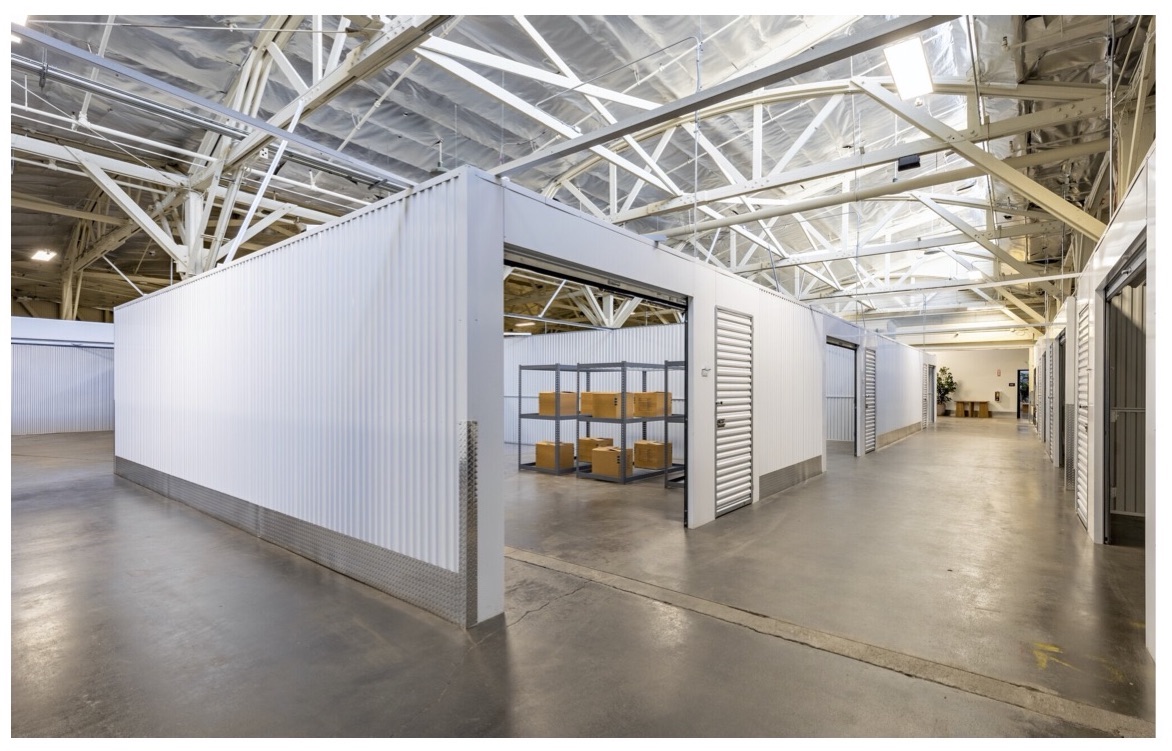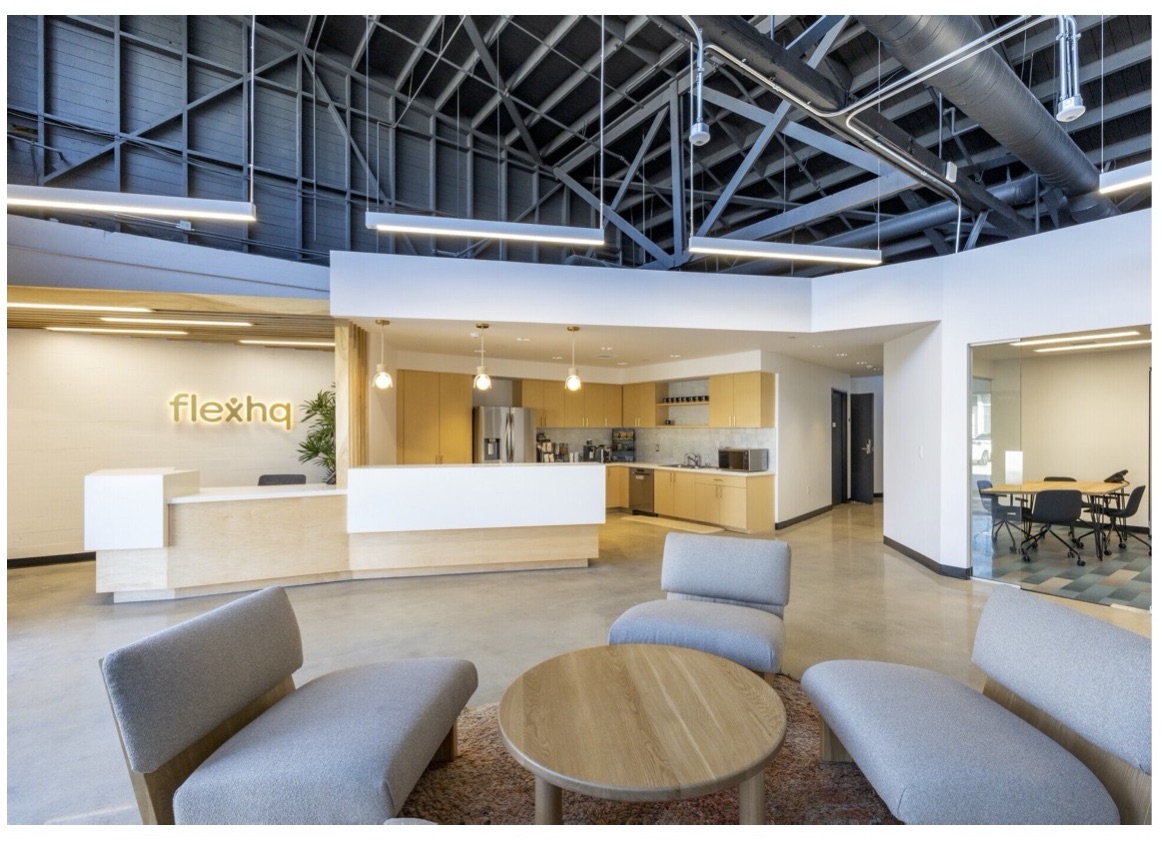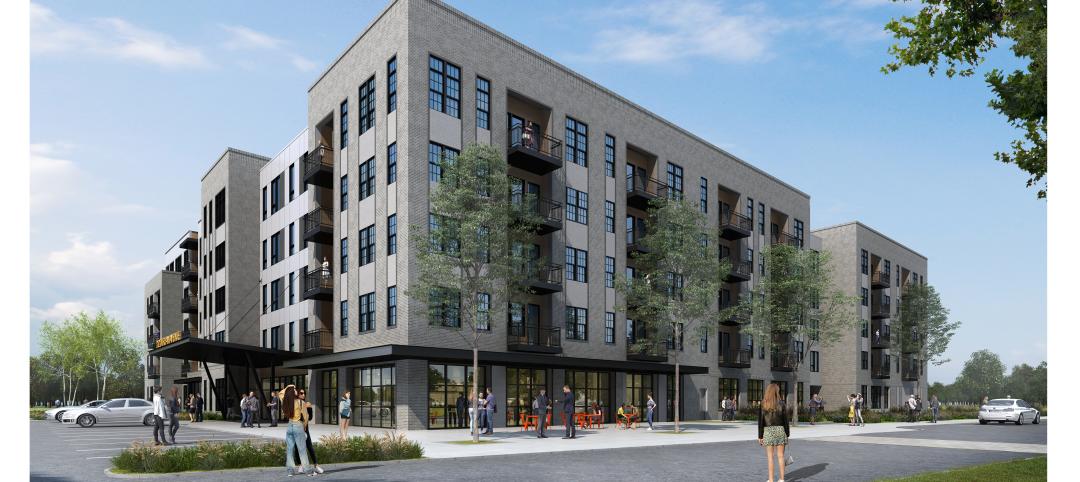The design firm Ware Malcomb has partnered with FlexHQ, a Los Angeles-based firm offering cowarehouse leasing solutions, to create a scalable workspace that emphasizes leasing flexibility and higher-quality and environmentally friendlier amenities than aren’t commonly found in this building type, say representatives from both companies.
Late last year, FlexHQ—which is backed by the self-storage company Storage Etc. and real estate developer KOAR International—opened its first location, a 50,000-sf warehouse in Los Angeles that offered warehouse and office spaces ranging from 300 to 3,000 sf. Sometime this summer, FlexHQ is scheduled to open a 75,000-sf cowarehouse in Denver with 67 warehouse spaces of varying sizes, along with 21 private offices, and amenities that include high-speed internet, conference rooms, daily shipping and receiving services, a communal kitchen, a professional photo studio, and podcast studio.
The Denver Post reported that FlexHQ paid $10.8 million to acquire the Denver building in September 2022. FlexHQ intends to own its cowarehouses as it grows. FlexHQ’s immediate expansion plans call for opening cowarehouses in Salt Lake City and Dallas, according to Laurent Opman, the company’s cofounder, in response to emailed questions from BD+C. The company is also exploring growth opportunities in Florida and Tennessee.
Opman says that FlexHQ was attracted to Ware Malcomb’s “deep experience” in industrial and warehouse architecture, its nationwide offices, and its close relationship with CBRE, which is providing construction management services for FlexHQ’s projects. Other members of the Building Team on the Denver project are the GC Alcorn Construction, and a local architect Intergroup Architects.
A sustainable interior design for cowarehouse facility

FlexHQ has entered what can best be described as a crowded but fragmented competitive field, led by Cubework, with around 80 locations nationwide and in Canada, and several other locations scheduled to open soon, according to its website. Saltbox, with 10 locations, touts is cowarehouses as “built by entrepreneurs for entrepreneurs.”
By offering space options, FlexHQ is appealing to startups and smaller businesses that are seeking lease flexibility as their companies’ needs change. FlexHQ, says Opman, is “rooted in the experience of its founders” in commercial real estate acquisition and development, with an emphasis on adaptive reuse. Opman adds that FlexHQ is focused on “delivering the best locations, high quality improvements, and the highest level of operation and user’s experience.”
In addition to EV charging stations, Ware Malcomb’s sustainable design for the Denver location includes upgrading and retrofitting the building’s entire lighting system, and using recycled building materials, energy saving fixtures, and green technologies that reduce the facility’s carbon footprint.
What’s different from competitors’ cowarehouses, says Hardev, is an “elevated design” with natural materials “to bring warmth to a space that is generally seen as a stark and cold environment.” Branding and graphics for wayfinding provide a “curated cowarehousing space where businesses feel a sense of community as well as foster creative energy.”
The communal experience that FlexHQ is striving to create might present price barriers for some tenants. Opman told Bisnow.com that the average rent for space in its Los Angeles facility is about 2.5 times higher than the average warehouse space, and twice what self-storage would charge.
Combining warehouse and office spaces also presents some design and engineering challenges, says Bhavini Hardev, Ware Malcomb’s Studio Manager. She explains that acoustics, functionality, user friendliness, and security are the focal points of the layout whose quiet office spaces must coexist with noisier loading and storage areas. The design takes these adjacencies into account with “strategic placement” of rooms and materials.
Related Stories
Industrial Facilities | Jun 20, 2023
A new study presses for measuring embodied carbon in industrial buildings
The embodied carbon (EC) intensity in core and shell industrial buildings in the U.S. averages 23.0 kilograms per sf, according to a recent analysis of 26 whole building life-cycle assessments. That means a 300,000-sf warehouse would emit 6,890 megatons of carbon over its lifespan, or the equivalent of the carbon emitted by 1,530 gas-powered cars driven for one year. Those sobering estimates come from a new benchmark study, “Embodied Carbon U.S. Industrial Real Estate.”
Multifamily Housing | May 12, 2023
An industrial ‘eyesore’ is getting new life as an apartment complex
The project, in Metuchen, N.J., includes significant improvements to a nearby wildlife preserve.
Industrial Facilities | Apr 10, 2023
Implementing human-centric design in operations and maintenance facilities
Stantec's Ryan Odell suggests using the human experience to advance OMSF design that puts a focus on wellness and efficiency.
Warehouses | Mar 29, 2023
Construction completed on Canada’s first multi-story distribution center
Construction was recently completed on Canada’s first major multi-story industrial project, a distribution center in Burnaby, British Columbia. The project provides infrastructure for last-mile delivery in a world where consumers have come to expect next-day and same-day delivery, according to Ware Malcomb, the project's architect of record.
Industrial Facilities | Mar 6, 2023
The largest planned logistics and business park in North America gets under way in Southern California
The $25 billion World Logistics Center will boost the supply chain capabilities of Southern California and will serve as a distribution center for destinations across the continent.
Intelligent Lighting | Feb 13, 2023
Exploring intelligent lighting usage in healthcare, commercial facilities
SSR's Todd Herrmann, PE, LEEP AP, explains intelligent lighting's potential use cases in healthcare facilities and more.
Giants 400 | Feb 9, 2023
New Giants 400 download: Get the complete at-a-glance 2022 Giants 400 rankings in Excel
See how your architecture, engineering, or construction firm stacks up against the nation's AEC Giants. For more than 45 years, the editors of Building Design+Construction have surveyed the largest AEC firms in the U.S./Canada to create the annual Giants 400 report. This year, a record 519 firms participated in the Giants 400 report. The final report includes 137 rankings across 25 building sectors and specialty categories.
Giants 400 | Feb 6, 2023
2022 Telecommunications Facility Sector Giants: Top architecture, engineering, and construction firms in the U.S. telecommunications facility sector
AECOM, Alfa Tech, Kraus-Anderson, and Stantec head BD+C's rankings of the nation's largest telecommunications facility sector architecture, engineering, and construction firms, as reported in the 2022 Giants 400 Report.
Industrial Facilities | Dec 21, 2022
New York City’s largest industrial building is nearing completion
The multistory facility is arriving at a time when space remains at a premium.
Adaptive Reuse | Dec 21, 2022
University of Pittsburgh reinvents century-old Model-T building as a life sciences research facility
After opening earlier this year, The Assembly recently achieved LEED Gold certification, aligning with the school’s and community’s larger sustainability efforts.

















